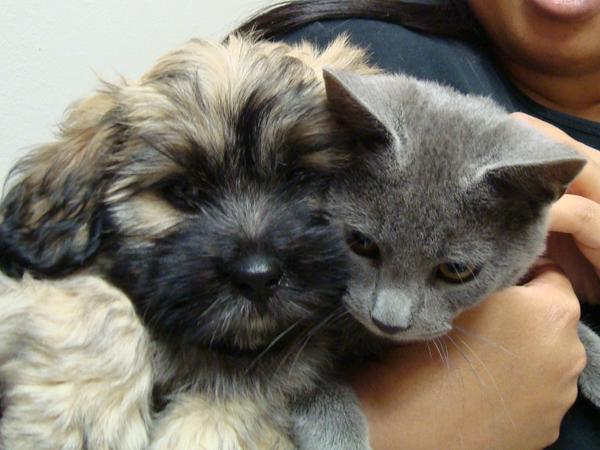
With Valentine’s Day just around the corner, it’s a good time to acknowledge the love we receive from our feline friends. Photo: Megan Harris (2015)
In the previous installment of our two-part series, Dr. David Horne of Companion Animal Hospital in Santa Cruz talked about the basics of puppy care. In part two, we’ll hear from Dr. Donna Baird, associate veterinarian at Companion Animal Hospital, about the basics of caring for a new kitten.
Picking out your new kitten
When choosing a new kitten, it’s important to consider the source. “While it’s not uncommon to see someone with a box of kittens on a street corner, a better source is a private home or shelter, both of which will give you some idea about your new kitten’s origins,” says Dr. Baird. “Ideally, you should try to see its mother, as she can tell you a lot about the kitten. In many cases, if the mother is feral, her kittens won’t be as easily socialized as kittens that come from a domesticated cat.”

It may be tempting to take home a kitten from a street corner box, but a better source is a shelter or private home. Photo: Justine Maclean (2015)
Veterinary examination and treatment
The next step after picking out your kitten is to bring it in for a veterinary exam. In addition to giving you guidelines on proper nutrition and care, a veterinarian will check for signs of infection or diseases like ear mites, skin lesions and feline leukemia, the latter of which can be passed from the mother to her litter. Shelters perform these tests prior to putting kittens up for adoption, which is another reason they’re good places to start.
In addition to checking for disease, a vet can implement several preventative measures at a kitten’s first appointment, including vaccinations for common diseases like rabies and distemper, as well as deworming. “A lot of kittens come in with parasites that were transferred from their mother’s placenta at birth, which is why we always recommend deworming in addition to standard vaccinations,” says Dr. Baird.

It’s important to be present when introducing your new kitten to the other pets in your home. Photo: Antioch Veterinary Hospital (2015)
Introduction to other pets
Upon bringing your kitten home, be intentional about introducing it to any additional pets you have. “It’s best to slowly introduce your kitten to your other pets,” says Dr. Baird. “If you’re worried about that first face-to-face interaction, you can start by putting each pet on either side of a door, which will allow them to sniff each other underneath. Either way, you definitely want to be present at the initial introduction to stop any potentially harmful interaction.” As Dr. Baird explains, the adjustment time between pets can vary depending on the species. “Dogs and cats usually get along fine, but when there’s another cat, it can take a little more time for them to adjust to each other.”

Cats require a very specific diet, so be proactive about providing optimal nutrition. Photo: Andrew Park (2015)
Nutrition
Once your kitten has been vaccinated and settled into your home, the last remaining element is providing proper dietary nutrition. According to Dr. Baird, it’s surprising how often this aspect gets neglected. “It’s not uncommon for people to feed their cats the same food as they feed their dogs,” she says. “However, cats and dogs have very different nutritional needs. Cats should basically be on a paleo diet, so we encourage owners to keep their food as grain-free as possible. There are some really good foods out there that are along these lines, both in dry and canned form.”
